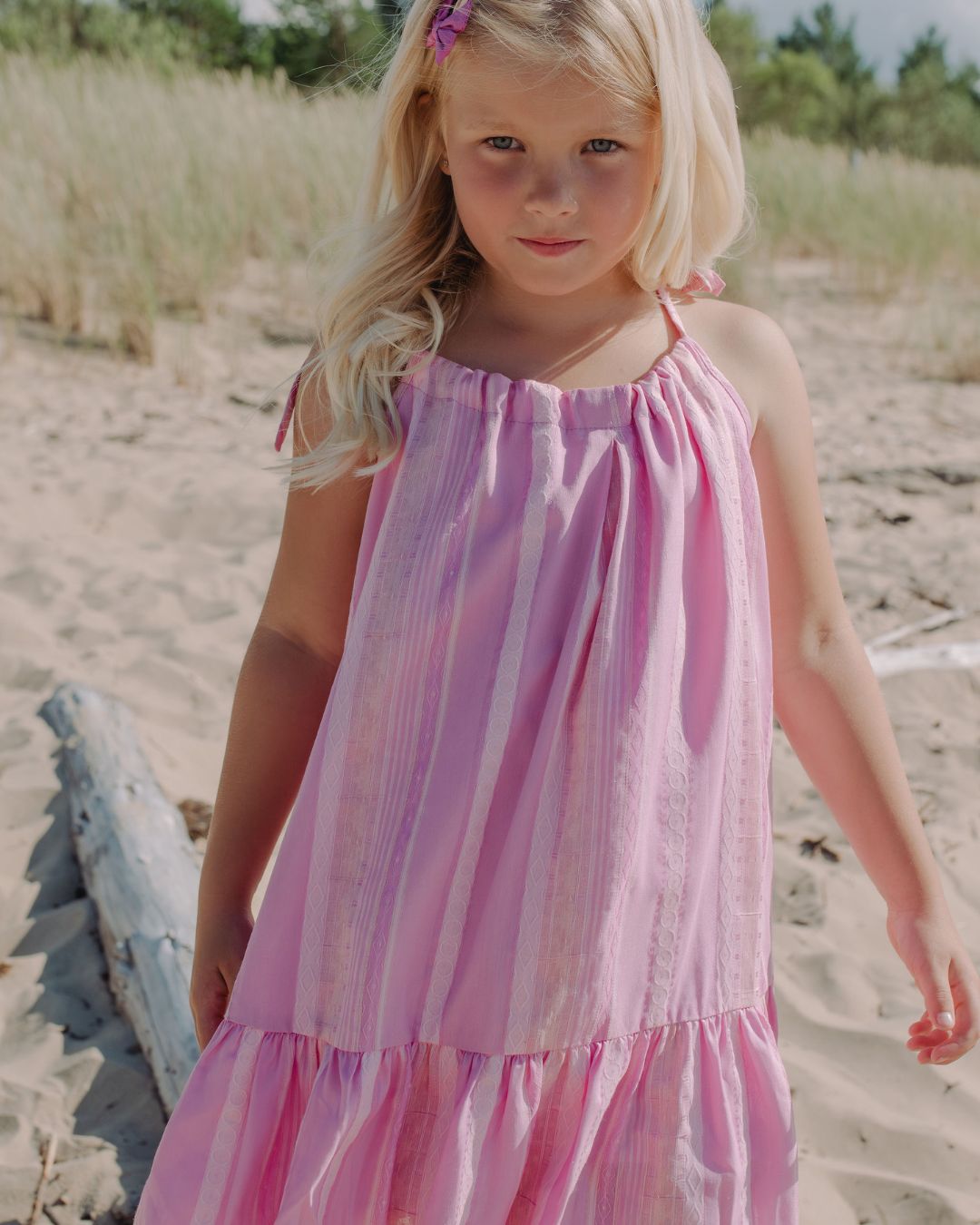Sustainable swimwear – What you need to know

Leaning towards a more sustainable lifestyle with lesser impact on the environment starts at home and in your closet but does not stop there. As the weather gets warmer and the cool water starts to call us for a dip the sustainable lifestyle extends towards the outdoors and our holidays. We already talked about some of the tricks to make your holiday travels more sustainable and what the sustainable travel essentials are. This not only includes saying no to plastic bags and carrying a refillable water bottle, but also of course includes your clothes and more specifically your swimwear. Now, you might wonder how swimwear can be sustainable, considering the fabric that swimwear is usually made of. There are a few things though that you can do to make your swimwear eco-friendlier for the environment. Here is what you need to know about sustainable swimwear.

Sustainable Swimwear – About the fabrics
Swimwear is one of those pieces of clothing that need to tick off quite a few boxes to make it an item you love to wear. It needs to be comfortable and functional, look good and should keep its original state and not be warped after a few wears and washes.
Considering that you move a lot in your swimwear, that you swim in it, but also wear it outside of the water, the fabric of your swimwear needs to be stretchy and elastic, water-repellent and dry quickly. Natural fibers are too absorbent and become misshaped when wet, which makes them not ideal to make swimwear of. This means that we look at synthetic fibers as a popular choice, because they offer everything you need in swimwear. Unfortunately, these fabrics, such as polyester, nylon or spandex are made from plastic-derivates that are created from petroleum. This makes them quite energy and resource intensive in production and also non-biodegradable once they have reached the end of their lifespan.
The solution to make swimwear sustainable and more eco-friendly is to look for recycled materials, such as recycled polyester, econyl. This gives a second life to plastic that already exists, keeps it out of the landfills and oceans and minimizes the use of virgin fossil fuels. Also, sustainable swimwear is designed to last for years. On top of these attributes the people involved in the production and manufacturing get paid fair wages and work under safe and respectful working conditions. A box that fast fashion items cannot necessarily tick.

Recycled polyester – a more sustainable choice for swimwear
Did you know that polyester is found in 52% of our clothes? With its characteristics of being stretchy, durable, moisture-absorbent and retaining its shape while resisting sweat and UV rays, polyester is nowadays a very popular choice in sportswear, activewear, fleeces, coats and of course swimwear.
Polyester is derived from petroleum which makes it a synthetic plastic-fiber. The transformation process releases toxins into the atmosphere and the production is energy and resource intensive. Recycled polyester on the other hand requires 59% less energy than virgin polyester and also generates up to 32% less CO2 during its production. Since recycled polyester is mainly made from recycled plastic bottles, it keeps plastic out of landfills and oceans. It still remains non-biodegradable, but overall, it is an eco-friendlier choice.
Recycling plastic has its limitations though, especially when it comes to garments. Often garments are mixed with other fibers which makes it difficult if not impossible to recycle. During the recycling process there often is a need to add some virgin material to keep the quality of the end product high. The process often involves a lot of redyeing which depending on the choices of dye can have a considerable impact on the environment.
Certifications can help you identify whether your swimwear fits the sustainability standards of a recycled garment. Look for the Recycled Claim Standard (RCS), the Global Recycled Standard and the Recycled Content Certification. They ensure that there is a robust chain of custody for your item and reduce the likelihood of mixing and swapping materials during the production process.

How to take care of your sustainable swimwear
Being more sustainable in your buying habits and looking for recycled materials in your swimwear is the first step towards a more sustainable approach, but it does not stop there. Sustainable swimwear as all sustainable clothing for that matter is made to last and with a few best practices you can make sure that your swimwear has a long lifespan. It comes down to reducing our impact on the environment by needing less, and buying new things less often. So how do you take best care of your sustainable swimwear?
- After your swim, wash out saltwater and chlorine by rinsing it with water.
- Don’t wring out the excess water as this damages the fibers. Press lightly into a towel instead.
- Handwash gently in cold water without scrubbing. This will reduce the number of plastic microfibers released, and avoid fabric damage through the use of hot water.
- Line dry your swimwear in the shade. Exposure to sunlight also damages the fabric.
- Do not put your swimwear in the dryer.
- Wash less often and avoid fabric softener.
Bonus tip: When you do retire your swimwear, you can upcycle it into scrunchies and hair ties.

A word on sun protection swimwear – a sustainable & practical choice
We have talked extensively about swimwear in general and the materials used to make them, but let’s also talk about sun protection swimwear. While swimwear in general is functional with the goal to cover the main parts of your body, sun protection swimwear goes a step further. It is essential when going to the beach, doing water sports or generally being outside for a longer period of time.
Sun protection swimwear or rash guards are designed to keep harmful UV rays away from your skin. The advantage here is that you are ready to jump into the fun as soon as you put it on. You don’t need to wait for the protection of sunscreen to kick in, which is about 20 minutes after applying. You also limit your application to exposed body parts, such as hands, feet, face and neck. Ideal for kids who might not like sunscreen and just in general to keep UV radiation away from your skin. UV radiation can cause skin issues, such as wrinkles, brown spots, sunburns and even cancer, so you should try to be as protected as possible.
Did you know that the skin of children is only about 1/5 of the thickness of adult skin which means that the skin barriers are less effective. Children are hence more delicate to sun exposure and can get sunburns even with a small amount of sun exposure. A rash guard is a must for the little ones (girls & boys) when playing at the beach or in the water.

When choosing sun protection swimwear pay attention to certain details. It should cover as much skin as possible and should fit snuggly without being too tight. The fabric should be woven tightly to keep UV rays at bay. With the UPF (Ultraviolet Protection Factor) indication you can identify the level of protection offered by the swimwear in question. Look for UPF 50 or even UPF 50+ as these will block out over 95% of UVA and UVB rays.
A note on taking care of your rash guard: If not taking care of properly the protection will diminish over time. By stretching the fabric too much, through the way of washing and drying it or through wearing to tightly, more sun radiation will make it through the fabric and diminish the protection effects. The same care indications as for swimwear mentioned above apply here as well.
Also do not forget about hats and sunglasses who also have a major role to play in protecting you and your children against the sun. Luckily MiliMilu has some cute styles that can even take you from the beach to the city. If you wonder what to look out for when buying sunglasses for children, we got you covered.

Concluding words on sustainable swimwear
When it comes to swimwear there sure is no perfect solution to make it sustainable and all the way eco-friendly, but buying swimwear made from recycled polyester or recycled nylon for that matter is the better option as it at least reduces the amount of virgin material used and uses materials that are already present waiting for their second life. And while recycling in general is a good thing, we should not forget that it is not enough. We also should keep in mind that buying less, but more of what we truly love in better quality that lasts longer is the more sustainable choice.
Missed the links to our swimwear & rash guard collections for women as well as for girls and boys!?
MiliMilu Women’s Swimwear
MiliMilu Girls Swimwear
MiliMilu Boys Swimwear
MiliMilu hats
MiliMilu sunglasses
Subscribe to our channels (Newsletter, Facebook & Instagram) to stay tuned for the newest releases of new sustainable fashion and other MiliMilu news!














Comments